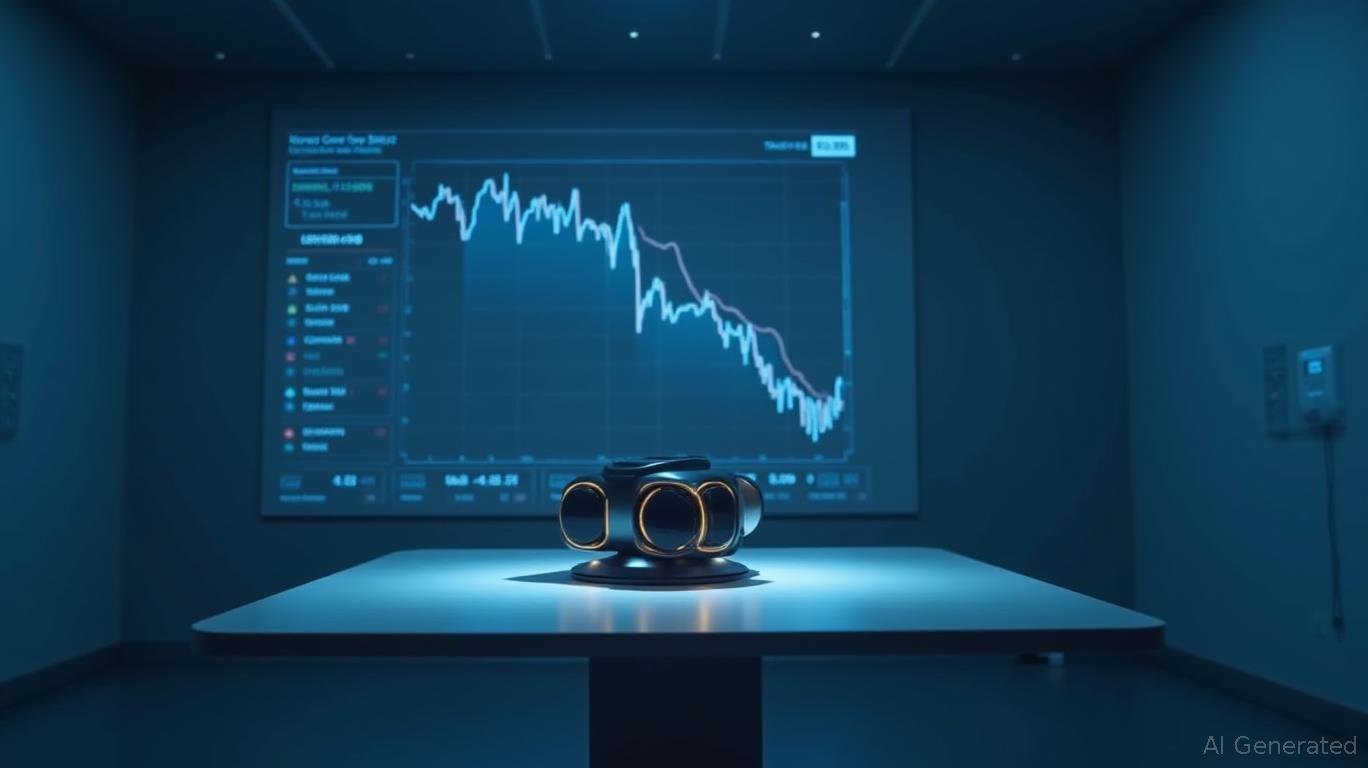LeddarTech's Downfall: A Cautionary Tale for High-Risk Tech Investors
The automotive technology sector, once brimming with optimism fueled by advancements in AI and autonomous driving, has witnessed a stark reversal of fortune with LeddarTech's imminent delisting and bankruptcy. Once positioned as a leader in advanced driver assistance systems (ADAS),
Inc. (LDTC) now symbolizes the perils of overreliance on speculative growth and undercapitalized R&D. This collapse offers critical lessons for investors navigating the volatile terrain of high-risk tech sectors. Let's dissect the chain of events, strategic missteps, and systemic risks that brought this firm to its knees—and why similar ventures may face similar pitfalls.The Chain of Events: From Promising IPO to Bankruptcy
LeddarTech's trajectory mirrors the classic arc of a company caught between ambition and reality. After a 2021 SPAC merger that valued the firm at over $1 billion, optimism centered on its AI-driven LiDAR and sensor fusion technologies. However, reality soon intervened. By late 2024, the company reported a $16 million net loss for its fiscal second quarter, with cash reserves dwindling to $9.2 million—nowhere near enough to cover its $105 million in debt. A default notice on bridge financing obligations in early 2025 sealed its fate. On June 18, 2025, LeddarTech filed for bankruptcy under Canada's Bankruptcy and Insolvency Act, with trading suspended ahead of its June 24 delisting from Nasdaq.

This visual underscores the disconnect between LeddarTech's valuation and its deteriorating fundamentals. While its shares once traded at $12 post-IPO, they now hover near $0.30—a 97% collapse in less than four years.
Strategic Missteps: The Perfect Storm of Overextension and Poor Timing
1. Overinvestment in R&D Without Revenue Conversion
LeddarTech's downfall began with its bet on capital-intensive R&D without securing meaningful revenue streams. Despite securing design wins with a major commercial trucking OEM and a $2 billion “lifetime revenue pipeline,” the company failed to translate these wins into cash. As of Q2 2025, its revenue remained negligible compared to its debt burden, highlighting a fatal flaw: tech patents ≠ liquid assets.
2. Failed M&A and Capital Raising Strategies
The firm's attempts to pivot via mergers or partnerships also faltered. A notice of default on bridge financing in January 2025, coupled with the inability to secure a buyer, forced its hand. Meanwhile, institutional investors like Clear Street Derivatives LLC and Walleye Trading LLC liquidated their stakes entirely, signaling a loss of confidence. Even minimal investments from firms like XTX TopCo Ltd were insufficient to stabilize the situation.
3. Operational Overreach
By June 2025, LeddarTech had laid off most employees, halted operations, and left its patents in the hands of insolvency trustee Raymond Chabot Inc. The board's abrupt resignation further eroded trust, leaving stakeholders with little recourse.
Red Flags for Investors: Lessons from the Collapse
1. Liquidity Trumps Innovation
LeddarTech's $105 million debt load versus $9.2 million in cash at Q2's end illustrates a cardinal rule: cash is king. Investors must scrutinize a firm's cash reserves, debt-to-equity ratios, and free cash flow generation—not just its patent portfolio or potential partnerships.
2. Revenue Diversification is Non-Negotiable
The company's reliance on a single OEM deal and a $2 billion “pipeline” (which may never materialize) exposed its lack of revenue diversification. For tech firms, proven, recurring revenue streams are far more critical than speculative contracts.
3. Institutional Investor Exodus is a Canary in the Coal Mine
The mass liquidation of stakes by major institutional holders should have been an early warning. Investors ignoring such signals risked being left holding the bag as valuations cratered.
4. Regulatory and Legal Risks in Bankruptcy
Once delisted, LDTC shareholders face near-zero recovery prospects. In bankruptcy, common stockholders typically rank last in liquidation priority behind creditors, bondholders, and preferred shareholders. This underscores the hierarchy of risk in corporate structures.
Broader Implications: A Wake-Up Call for the AI/AD Sector
LeddarTech's collapse is not an isolated incident but a symptom of systemic challenges in AI and autonomous driving tech. Companies in these sectors often require decades of R&D investment before generating returns, yet public markets demand short-term results. Investors must now ask:
- Are firms in this space prioritizing near-term profitability over growth at all costs?
- Do they have diversified revenue streams (e.g., software licensing, retrofitting legacy vehicles) to offset R&D expenses?
- How do their cash burn rates align with projected timelines for monetization?
The LeddarTech case also highlights the perils of patents as a valuation crutch. Intellectual property is only valuable if it can be monetized through licensing, partnerships, or product sales—a hurdle many firms overlook.
Investment Implications: Navigating the Rubble
For investors, this episode underscores the need for extreme caution in high-risk tech sectors. Consider these strategies:
Avoid Overvalued Speculation
Steer clear of firms trading at premiums based on future potential rather than present-day revenue. Use metrics like price-to-sales ratios to gauge overvaluation.Prioritize Cash Flow, Not Patents
Focus on companies with positive free cash flow and manageable debt levels. A firm's ability to self-fund R&D matters far more than its patent count.Diversify Exposure
Allocate capital to sector leaders with proven revenue models (e.g., NVIDIA's software stack dominance) while hedging against volatility through broader market ETFs.Do Your Homework
Scrutinize SEC filings for red flags like operating losses, debt covenants, or reliance on one-time contracts. Tools like SEC's EDGAR database are indispensable here.
This visual would reveal LeddarTech's extreme leverage relative to peers, a critical red flag missed by many investors.
Conclusion: The Cost of Overextension in Tech's Wild West
LeddarTech's demise is a stark reminder that even visionary technology cannot survive without financial discipline and sustainable monetization. Investors in AI and autonomous driving must demand more than flashy prototypes or patent portfolios—they need firms with cash reserves, diversified revenue, and real-world traction. As the Nasdaq delisting looms, LeddarTech's story serves as both a cautionary tale and a compass for navigating the high-stakes world of innovation.
In the end, the market rewards resilience—both technological and financial. Those who ignore the latter do so at their peril.
This analysis is for informational purposes only. Consult a financial advisor before making investment decisions.

Comments
No comments yet